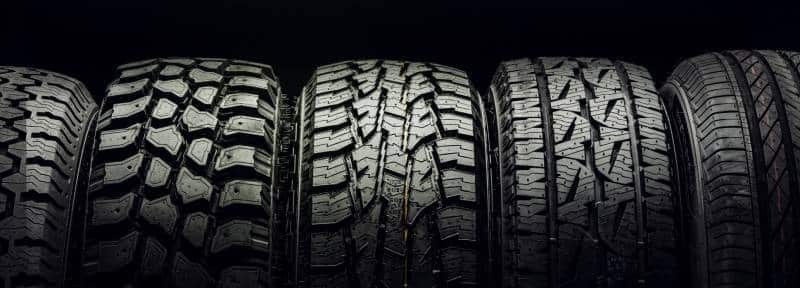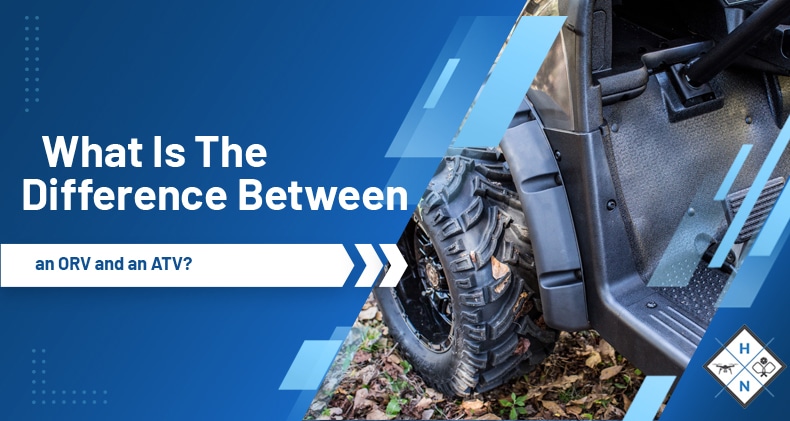ORVs or Off-road vehicles are one of the best innovations of man. Possessing a vehicle you can drive around rough terrains is something exciting. However, an ATV or all-terrain vehicle is even more spectacular because it can drive around any terrain. Keep reading to find out the difference between an ORV and an ATV.
Off-road vehicles (or ORVs) are beefier and allow for "side-by-side" riding and carrying loads, this being the reason many refer to it as side-by-side or SxS as an acronym. On the other hand, all-terrain vehicles are mostly four-wheeled and are designed for one or even two riders.
Most people ask one question when they want to purchase off-road vehicles: what are the differences between all-terrain and off-road vehicles? We will look at some of these differences.
Differences between an ORV and an ARV

Before looking at the differences between off-road vehicles and all-terrain vehicles, let us look at an ORV and an ATV.
Off-road vehicles are any motor vehicle designed to travel on and off paved or gravel surfaces. Large tires characterize these vehicles with deep, open treads, caterpillar tracks, and a flexible suspension. ORVs are very versatile, hence their popularity.
ORVs can travel across land, sand, snow, marsh, ice, water, swampland, or any other natural terrain. The design of ORVs is specific, so they do not tumble down when traveling on rough terrains.
Off-road vehicles are usually larger; they allow multiple passengers to have a ride. They are more comfortable because of their bucket seats (or automobile-style bench) and their roll-cage-like enclosure. ORVs are designed to haul, which explains the large physique.
ORVs are not limited to traveling on only structured road architecture; they can travel in open spaces and terrains that would be rough and inaccessible to other motor vehicles.
Off-road vehicles include all-terrain vehicles (ATV), utility terrain vehicles (UTV), multi-wheel drive vehicles, sport-utility vehicles (SUV), off-highway vehicles (OHV), and dirt bikes.
ORVs that are more user-specific include dune buggies, sand rails, monster trucks, rock crawlers, hovercrafts, military vehicles, snowmobiles, and dual-terrain or amphibious vehicles.
All-terrain vehicles (ARVs) are also referred to as light utility vehicles (LUV), quad, or quad bikes. ARVs travel on low-pressure tires; they have a seat straddled by the operator and handlebars to steer control.
ARVs are designed to travel across a wider variety of terrain compared to other off-road vehicles. However, most ARVs are used for industrial purposes, like moving workers and cargo across construction sites.
All-terrain vehicles are divided into two subcategories: Type 1 ATVs and Type 2 ATVs. Type 1 ATVs are designed to accommodate only one person; the vehicle's rider. Type 2 ATVs are designed to accommodate two people, the rider and a passenger. In Type 2 ATVs, there is a designated seating position behind the rider.
An interesting fact about all-terrain vehicles is that they are designed for people in age brackets. So, there are ARVs for youth, young adults, and older adults. You have the luxury of choosing any ATV of your choice. However, the ATV industry advises that you operate the ATV designed for your age.
Now that you have a good understanding of off-road vehicles and all-terrain vehicles let us look at some of the differences.
| Functionalities | Off-Road Vehicles | All-Terrain Vehicles |
| Weight | Heavier | Lighter |
| Wheels | Multi-wheeled (2, 3, 4) | Four-wheeled |
| Size | Larger in size | Smaller in size |
| Passengers | Multiple passengers | One (in few cases, two) |
| Protection Systems | Present | Absent |
| Speed | Fast | Faster |
| Cost | Expensive | Less expensive |
You can see the significant difference between an off-road vehicle and an all-terrain vehicle. With this in mind, you should have no difficulty identifying or differentiating between ORVs and ATVs.
What Is Considered An ORV?
ORVs are vehicles that can travel across any terrain. They are not limited to trails and roadways. ORVs or off-road vehicles can travel across the land, sand, water, marsh, snow, swampland, ice, or other natural terrains.
There are specialized characteristics that differentiate vehicles, some of the characteristics that make a vehicle an ORV are:
- Large all-terrain tires
- Ground clearance
- Breakover, approach, and departure angles
- Low-end torque
- Low range gear
- Open differentials
Let us look at these features of off-road vehicles.
Large All-Terrain Tires
The presence of large tires categorizes off-road vehicles. These tires are special tires that can move through any terrain. As stated previously, large tires make it very easy to move across different surfaces such as rough land, water, mud, swamp, snow, and other terrains. Street tires do not perform well off the road, so special large tires are the preferred option.
Ground Clearance
Off-road vehicles usually have ground clearance that makes them traverse harsh terrains. Ground clearance refers to the space between the underside of the vehicle and the ground. Ground clearance makes the vehicle avoid scraping the ground and enormous obstacles as it moves. Without good clearance, the vehicle would have severe underside damage.
Breakover, Approach, And Departure Angles
The breakover angle of an off-road vehicle is the angle between the tires and the center of the vehicle's underside. It is also referred to as ramp-over angle. A good breakover angle allows the vehicle to travel over sharp crests.
The approach angle refers to the maximum inclined degree from the ground that the ORV can climb without its front end, bumper, or bull-bar getting stuck. In other words, it refers to the steepest hill the vehicle can climb without slamming the bumper against the slope.
The departure angle refers to the steepest hill the vehicle can descend from without the rear bumper slamming against the steep slope.
Low-End Torque
Off-road vehicles have low-end torque that allows the vehicle to maintain momentum over obstacles without wringing out the engine. Low-end torque delivers maximum control over the vehicle while scaling different terrains and obstacles.
Low range gear
The gear you will find in an off-road vehicle is referred to as granny gear. The granny gear makes it easy to traverse through steep grounds without even using the gas pedal.
Locking Differentials
Other vehicles have open differentials. This means the wheel with minor traction gets the most power. It is different in off-road vehicles; the wheel with the most traction gets the most power.
Is A Truck An OHV?
Off-road vehicles are known for their durability and sturdiness in traveling across different terrains. You can drive your ORV in any season, winter or summer, in any terrain.
To some people, a truck is also an off-road vehicle. However, if we look at the characteristics of a truck and an off-road vehicle, can we agree to the statement that a truck is an OHV? Let us find out.
A truck is not an off-road vehicle. There are a few similar characteristics, but that does not make a truck an ORV.
First, OHVs are characterized by their large all-terrain tires. Trucks also have large tires, but their tires are not to be driven off-road. So, this is one proof that a truck is not an OHV.
Off-road vehicles can travel across different surfaces. On the other hand, trucks are designed to travel on structured pathways. OHVs are designed to travel to places that cannot be accessed through regular roads. You cannot drive a truck over rocks, swamps, or on ice; it will get stuck. An ORV can drive through these terrains with ease.
Where Can You Operate An OHV?

Generally, OHVs are designed to be operated off-road, so when OHVs were manufactured, they were made for terrains inaccessible to other vehicles. You drive an OHV where you cannot drive your car. For example, if you want to drive across a desert, you will not take your car. An OHV is a preferred choice because it can move through rocks, sand, and mud easily.
Here is a list of places where you can operate an off-road vehicle:
- Dunes
- Desert
- Rocks
- Cross-country
- Tracks
- Green lane
- Muds
- Snow, ice, wet roads
- Steep grades
- Off pavement.
Even though you can operate them on those surfaces, there are some requirements that you must meet before driving an ORV on the highway.
Final Thoughts

While you may be wondering the differences between off-road vehicles and all-terrain vehicles, there is an exciting fact, ATVs are a type of ORV. Therefore, an all-terrain vehicle is just a sub-division of off-road vehicles.
Nevertheless, there are differences between them. We hope this blog post helped you identify these differences.
Keep reading:
- Where To Dump RV Waste [COMPLETE GUIDE]
- What Is A Mobile RV Repair Service? [FIND OUT HERE]
- Average Cost To Rent An RV? What You Should Expect To Pay
Shawn Manaher loves to play with new toys and dive into new hobbies. As a serial entrepreneur, work definitely comes first but there is always room for hobbies.

